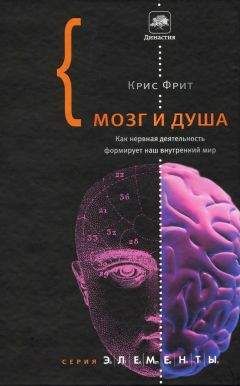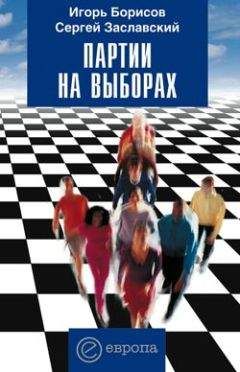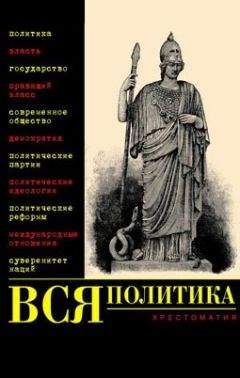ues has become common knowledge after years of rebounding
as though from rubber bands. The powerful military weapons
that jeopardize all humanity can, on the other hand, be consid-
ered as indispensable as a strait-jacket, something whose use
diminishes in proportion to the improved skills governing the
behavior of those persons entrusted with the healing arts. We
need measures which can reach all people and all nations and
which can operate upon the recognized causes of great diseases
Such therapeutic measures cannot be limited to the phe-
nomenon of pathocracy. Pathocracy will always find a positive
response if some independent country is infected with an ad-
vanced state of hysterization, or if a small privileged caste op-
presses and exploits other citizens, keeping them backward and
in the dark; anyone willing to treat the world can then be
hounded, and his moral right to act be questioned. Evil in the
world, in fact, constitutes a continuum: one kind opens the door
to another, irrespective of its qualitative essence or the ideo-
logical slogans cloaking it.
It also becomes impossible to find effective means of thera-
peutic operation if the minds of people undertaking such tasks
are affected by a tendency to conversive thinking like subcon-
scious selection and substitution of data, or if some doctrine
preventing an objective perception of reality becomes manda-
tory. In particular, a political doctrine, for which a macrosocial
pathological phenomenon, in accordance with its famous ide-
ology, has become a dogma, blocks an understanding of its real
nature so well that purposeful action becomes impossible.
Anyone administering such action should undergo an appropri-
ate prior examination, or even a kind of psychotherapy, in or-
der to eliminate any tendencies toward even slightly sloppy
thinking.
Like every well-managed treatment, therapy of the world
must contain two basic demands: strengthening the overall
defensive powers of the human community and attacking its
most dangerous disease, etiotropically if possible. Taking into
account all the aspects referred to in the theoretical chapter on
ponerology, therapeutic efforts should be directed at subjecting
the operations of the known factors of the genesis of evil, as
POLITICAL PONEROLOGY
281
well as the processes of ponerogenesis itself, to the controls of
scientific and societal consciousness.
Present attempts at trusting moral data alone, no matter how
sincerely perceived, also prove inadequate as would trying to
operate solely on the basis of the data contained within this
book, ignoring the essential support of moral values. A pone-
rologist’s attitude underscores primarily the naturalistic aspects
of phenomena; nevertheless, this does not mean that the tradi-
tional ones have diminished in value. Efforts aimed at endow-
ing the life of nations with the necessary moral order should
therefore constitute a second wing, working in parallel and
rationally supported by naturalistic principles.
Contemporary societies were pushed into a state of moral
recession during the late nineteenth and early twentieth centu-
ries; leading them back out is the general duty of this genera-
tion and should remain an overall backdrop to activity as a
whole. The basic position should be the intent to fulfill the
commandment of loving one’s neighbor, including even those
who have committed substantial evil, and even if this love indi-
cates taking proplylactic action to protect others from that evil.
A great therapeutic endeavor can only be affected once we do
this with the honest control of moral consciousness, moderation
of words and thoughtfulness of action. At that point, ponerol-
ogy will prove its practical usefulness in fulfilling this task.
People and values mature in action. Thus, a synthesis of tradi-
tional moral teachings and this new naturalistic approach can
only occur with reasoned behavior.
Truth is a Healer
It would be difficult to summarize here the statements of the
many famous authors on the subject of the psychotherapeutic
role of making a person aware of what has crowded his sub-
conscious, stifled within by constant painful effort, because he
feared to look an unpleasant truth in the eye, lacked the objec-
tive data to derive correct conclusions, or was too proud to
permit the awareness that he had behaved in a preposterous
fashion. In addition to being quite well understood by special-
ists, these matters have also become common knowledge to an
adequate degree.
282
THERAPY OF THE WORLD
In any method or technique of analytical psychotherapy, or
autonomous psychotherapy, as T. Szasz119 called it, the guiding
operational motivation is exposing to the light of consciousness
whatever material has been suppressed by means of subcon-
scious selection of data, or given up in the face of intellectual
problems. This is accompanied by a disillusionment of substi-
tutions and rationalizations, whose creation is usually in pro-
portion to the amount of repressed material.
In many cases, it turns out that the material fearfully elimi-
nated from the field of consciousness, and frequently substi-
tuted by ostensibly more comfortable associations, would never
have had such dangerous results if we had initially mustered
the courage to perceive it consciously. We would then have
been in the position to find an independent and often creative
way out of the situation.
In some cases, however, especially when dealing with phe-
nomena which are hard to understand within the categories of
our natural world view, leading the patient out of his problems
demands furnishing him with crucial objective data, usually
from the areas of biology, psychology, and psychopathology,
and indicating specific dependencies which he was unable to
comprehend before. Instructional activity begins to dominate in
psychotherapeutic work at this point. After all, the patient
needs this additional data in order to reconstruct his disinte-
grated personality and form a new world view more appropri-
ate to reality. Only then can we go on to the more traditional
methods. If our activities are to be for the benefit of the people
who remained under the influence of pathocratic system, this
last pattern of behavior is the most appropriate; the objective
data furnished to the patients must derive from an understand-
ing of the nature of the phenomenon.
As already adduced, the author has been able to observe the
workings of such a process of making someone consciously
aware of the essence and properties of the macrosocial phe-
nomenon, on the basis of individual patients rendered neurotic
by the influence of pathocratic social conditions. In countries
119 Thomas Szasz, an American psychiatrist who has argued since the 1950s
that compulsory psychiatry is incompatible with a free society. [Editor’s
note.]
POLITICAL PONEROLOGY
283
ruled by such governments, almost every normal person carries
within him some neurotic response of varying intensity. After
all, neurosis is human nature’s normal response to being sub-
jugated to a pathological system.
In spite of the anxiety which such courageous psychothera-
peutic operations necessarily engendered on both sides, my
patients quickly assimilated the objective data they were fur-
nished, complemented them with their own experiences, and
required additional information and verification of their appli-
cations of this information. Spontaneous and creative reintegra-
tion of their personalities took place soon thereafter, accompa-
nied by a similar reconstruction of their world view. Subse-
quent psychotherapy merely continued assistance in this ever
more autonomous process and in resolving individual prob-
lems, i.e. a more traditional approach. These people lost their
chronic tensions; their perceptive view of this deviant reality
became increasingly realistic and laced with humor. Rein-
forcement of their capacity to maintain their own psychological
hygiene, self-therapy, and self-pedagogy was much better than
expected. They became more resourceful in practical life mat-
ters and were able to offer others good advice. Unfortunately,
the number of persons whom a psychotherapist could trust
adequately was very limited.
A similar effect should be attained on a macrosocial scale,
something technically feasible under present conditions. At
such an operational scale, it will liberate spontaneous interac-
tion among such enlightened individuals and the social multi-
plication of therapeutic phenomena. The latter will then create
a qualitatively new and most probably rather stormy social
reaction; we should be prepared for this in order to calm it
down. Finally, this will bring an overall feeling of relaxation
and a triumph of proper science over evil; this cannot be ne-
gated by any verbalistic means, and physical force also be-
comes meaningless. Using measures so different from anything
utilized before will engender an “end of an era” feeling during
which this macrosocial phenomenon was able to emerge and
develop, but is now dying. That would be accompanied by a
sensation of well-being on the part of normal people.
284
THERAPY OF THE WORLD
Within this suggested global psychotherapy, additional ob-
jectified material in the form of a naturalistic understanding of
the phenomenon constitutes the keystone material; this book
has therefore collected the most essential data the author was
able to obtain and to present here in a partially simplified ap-
proach. This no doubt does not represent the entirety of the
knowledge needed; further supplementation will be necessary.
On the other hand, I have devoted less attention to methods,
since this would constitute a manifold duplication of those
kinds of therapies many specialists already know and use in
their practice.
The purpose of this activity will be letting the world regain
its capacity to make use of healthy common sense and to rein-
tegrate world views based on scientifically objectified and ap-
propriately popularized data. The consciousness thus created
would be far more appropriate to the reality which was misun-
derstood until recently; as a result, man will become more sen-
sible in practical activity, more independent and resourceful in
solving life’s problems, and he will feel safer. This task is noth-
ing new; it constitutes a good psychotherapist’s daily bread.
The problem is technical rather than theoretical, namely how to
disseminate such sorely needed influences throughout the
globe.
~~~
Every psychotherapist must be prepared for difficulties
caused by the psychological resistance derived from persistent
attitudes and convictions whose lack of foundation becomes
revealed in the course of work. Particularly in the case of a
numerous group of people, these resistances become more
demonstratively manifest; however, among the members of
such a group we also find allies who help us break down these
resistances. In order to visualize this, let us revert once more to
the N. family example, wherein a dozen or so persons collabo-
rated in abusing a pleasant and intelligent thirteen-year-old
scapegoat.
When I explained to the uncles and aunts that they had been
under the influence of a psychologically abnormal person for
years, accepting her delusional world as real and participating
(with perceived honor) in her vindictiveness to the boy who
POLITICAL PONEROLOGY
285
was allegedly to blame for her failures, including those which
occurred years before his birth, the shock temporarily stifled
their indignation. There was no subsequent attack, probably
because this took place in my office of the public health service
and I was protected by the white coat I would usually don
whenever I did not feel completely safe. I thus suffered only
verbal threats. A week later, however, they started returning
one by one, pale and rueful; albeit with difficulty, they did
offer their cooperation in helping to repair the family situation
and the future of this unfortunate boy.
Many people suffer an inevitable shock and react with op-
position, protest, and disintegration of their human personality
when informed of such a state of affairs, namely that they have
been under the spellbinding and traumatizing influence of a
macrosocial pathological phenomenon, regardless of whether
they were followers or opponents thereof. Many people are
awakened to anxious protest by the fact that the ideology they
either condemned or somehow accepted, but considered a guid-
ing factor, is now being treated as something secondary in im-
portance.
The noisiest protests will come from those who consider
themselves fair because they condemned this macrosocial phe-
nomenon with literary talent and raised voices, utilizing the
name derived from its most current ideology, as well as making
excessive use of moralizing interpretations with regard to
pathological phenomena. Forcing them to an apperception of a
correct understanding of the pathocracy will be quite a Sisy-
phean labor, since they would have to become conscious of the
fact that their efforts largely served goals which were the oppo-
site of their intentions. Especially if they engaged in such ac-




